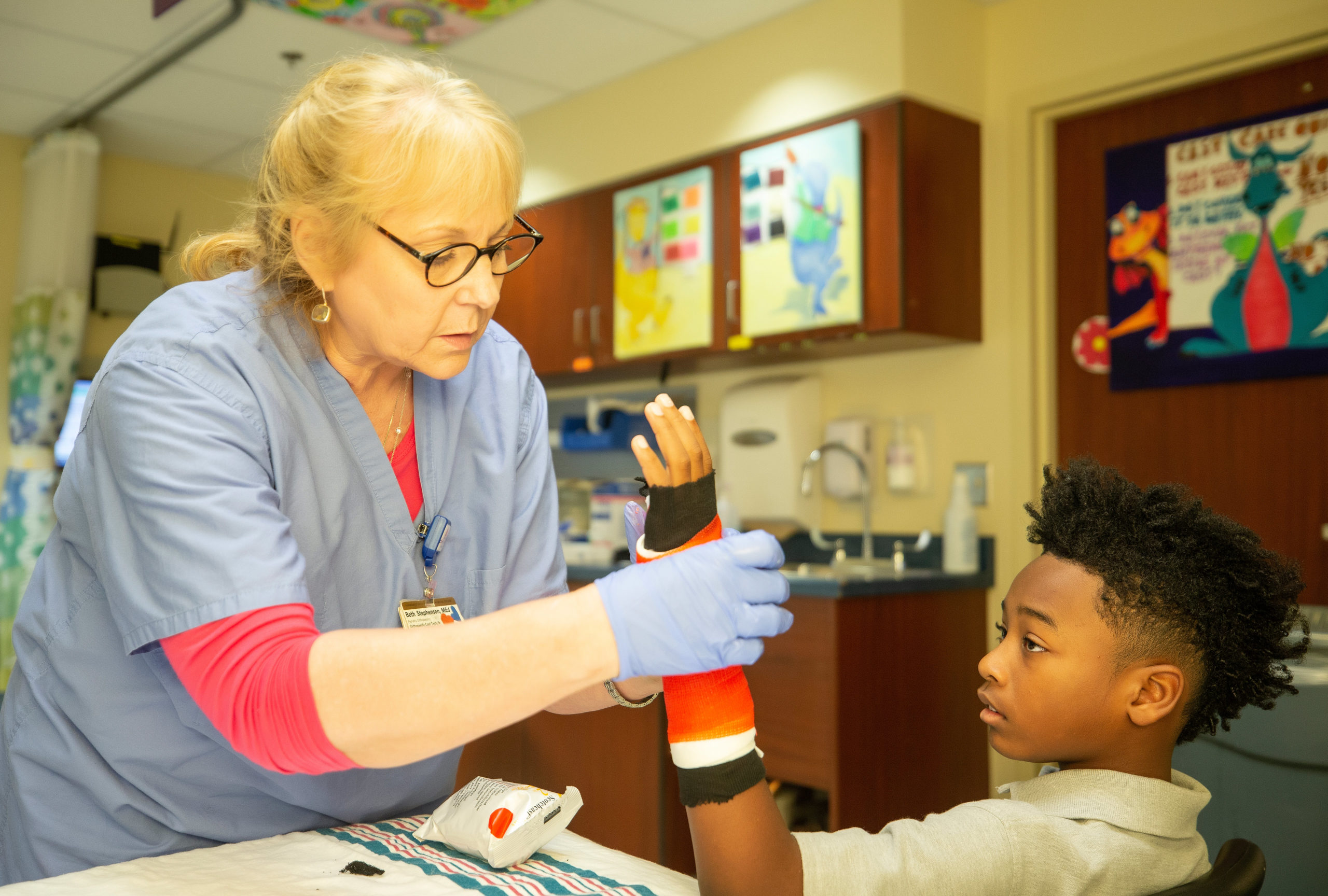What to expect if a child fractures an arm or hand.
Childhood is a time of great physical energy. Children love to run, jump, climb things – and by the time they’re in grade school, many play organized sports, too.
All of that is wonderful for their health and strength. But it’s a rare child who doesn’t get some type of injury from play. With luck, your child will only experience skinned knees — but as orthopedic doctors can attest, broken bones are common, too.
Broken hands, wrists and arms
The most common fractures children experience are in their hands and forearms, said Vanderbilt Orthopaedics surgeon Greg Mencio, M.D.
When children take a spill, they throw their arms out to break their fall, and sometimes that means breaking a bone in the hand, wrist or the bones in the forearm (the radius or ulna).
A fractured bone in the hand, wrist or lower forearm usually means wearing a splint or cast for four to six weeks. The cast prevents the child from moving the injured part, which then has a chance to heal.
However, if a child has a fracture about the elbow, treatment may involve surgery. A break in the bone just above the elbow is called a supracondylar humerus fracture. This is the most common site for pediatric orthopedic (bone and joint) surgery, Mencio said.
“It’s hard to get (the bone on either side of the fracture) lined up without putting the arm in an extreme position,” he said. “There are important structures that cross the elbow, and casting the arm in a position to keep elbow and the fracture lined up puts the extremity at risk for vascular (blood vessel) or nerve problems.” Because of this, the standard treatment for fractures just above the elbow is to surgically insert pins across the break, to encourage the bone to heal in the right alignment.
Unfortunately, this is a common need. At Vanderbilt, Mencio and his colleagues perform about 175 of these types of surgeries for injured children every year.
The good news is that children usually heal quickly. Children with a fracture near the elbow are mostly healed within 3 to 6 weeks, Mencio said, and they can usually ease back into their usual physical activities 6 to 8 weeks after surgery. Compared with adults, children’s joints “don’t get stiff, and they get a range of motion back quickly,” he said.
Fractures affecting growth plates
Complications may arise, however, is if the injury involves a growth plate. A growth plate is an area of softer tissue at the end of a child’s bone. As the child gets older, that cartilage-like area hardens into mature bone – but depending on the child and the bone, that can take up to age 20 to complete.
A child’s arm has many growth plates – there are five around the elbow, Mencio said, two at the wrist, each of the long bones in the hand has one; and so does each finger. Growth plates are also found around a child’s knees, ankles, hips and other bones.
Fortunately, most fractures involving the growth plate heal without any problem. Occasionally, the force of the injury can cause the growth plate to close prematurely or out of proper position. After a bone fracture, a child will need to have follow-up visits to the orthopedic doctor, to watch for these types of problems with the growth plate. If it’s not caught early and treated, it can affect the way the bone grows – leaving a child with arms of different lengths, or less than complete function in that limb.
How to prevent childhood broken bones
There’s no way to completely protect a child from all risk of injuring a bone, and parents shouldn’t worry about garden-variety physical play.
Mencio has a few cautions, however:
- Look for playgrounds built with cedar chips or rubber as a floor surface — not hard, unforgiving concrete.
- Hoverboards that were a popular item with children a few years ago lead to a particularly high number of falls and wrist injuries – not to mention fire hazards, well-publicized when this trend was at its peak, relating to the devices’ lithium-ion battery packs. The Consumer Product Safety Commission recalled more than 500,00 hoverboards.
- Say no to trampolines, even trampoline parks, Mencio said. Besides falling off the trampoline, children are easily injured when more than one person is jumping on the trampoline at once. Children easily collide with each other – and when one child is jumping up as another is coming down, a doubly powerful recoil can create too high and too fast a bounce, making fractures and head injuries more likely.
- Children under age 16 should not ride ATVs. When they’re old enough to use these popular vehicles, they should wear helmets and stick to a one-person-per-vehicle rule – no passengers.
Keep these considerations in mind to ensure a fun and safe childhood
Childhood happens, sometimes accompanied by these fractures. Know how to keep your child safe from these types of injuries, and read more in our blog.

If you are dealing with an injury, facing surgery or coping with chronic pain, Vanderbilt Orthopaedics offers a full spectrum of care. Our specialists work with you from evaluation and “prehab” through physical therapy and, if needed, surgery. We’ll help you get back to doing the things you love, pain-free. To make an appointment, call 615-936-7846.

